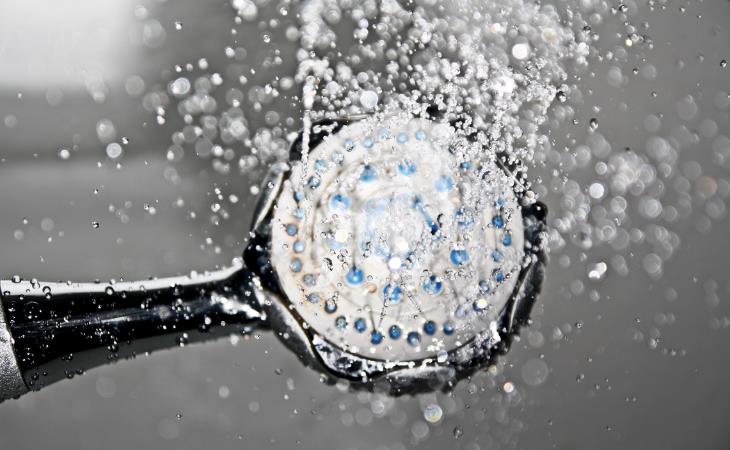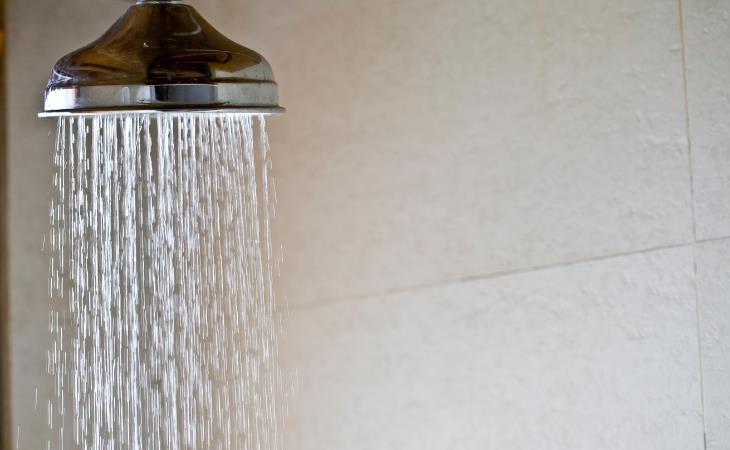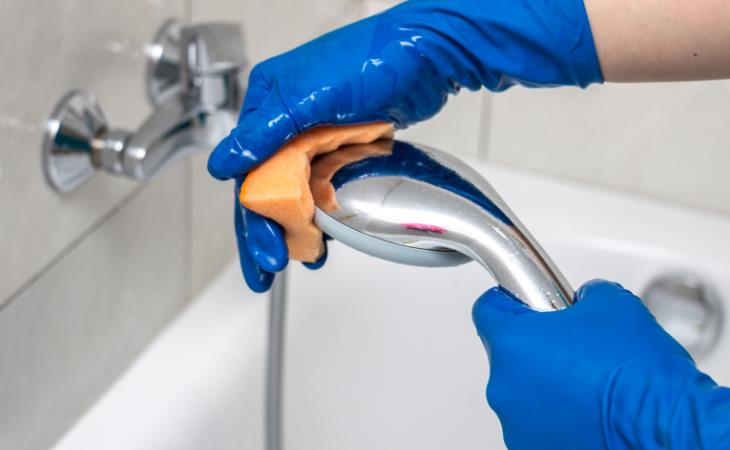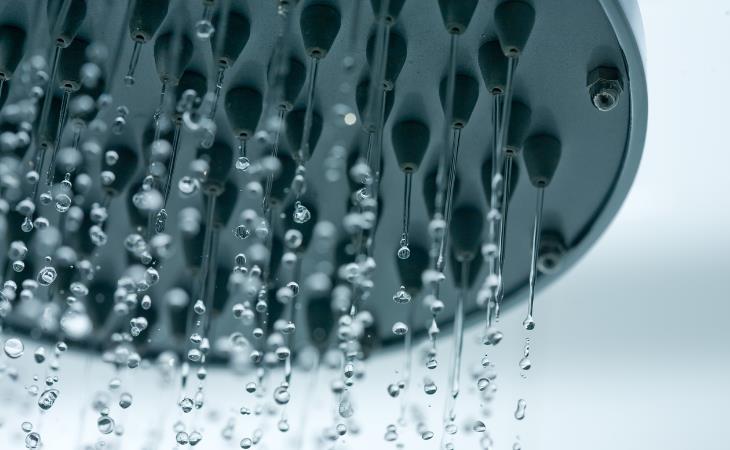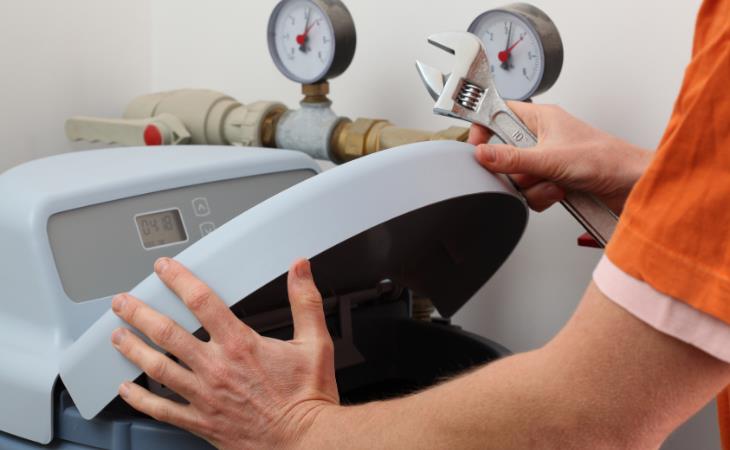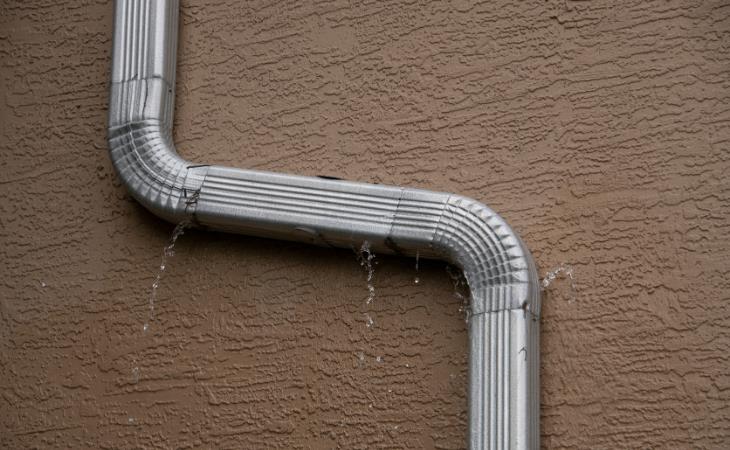Low water pressure in your shower can be caused by a variety of issues, the most common of which is a clogged water system, often visible as a blocked shower head. While this problem is usually fixable by yourself, deeper plumbing clogs may demand professional help.
Another potential cause is the presence of a water restrictor in your shower head, which is designed to reduce water consumption. However, because the restricted flow increases the time required to rinse off soap and shampoo, the unintended consequence may be a longer shower duration.
Water restrictors are installed in some apartment complexes or rental properties to conserve water. However, the buildup of dirt around these restrictors can cause a progressive drop in water pressure. Mineral deposits surrounding the nozzles, as well as dents in the shower hose, can all contribute to lower water flow as well.
How to Test Water Pressure for a Shower
You don't need to be an expert to detect low water pressure. Whether the decline is slow or abrupt, it could indicate particle buildup, leaks, or water restrictors.
Follow this simple DIY test to check the low water pressure in your shower: Put a one-liter measuring jug beneath the shower, crank it to maximum, and if it takes more than six seconds to fill, you have poor water pressure.
How to Increase Water Pressure in a Shower
When you have tested your shower's flow and determined that it needs to be increased, follow these steps to increase the water pressure in the shower.
1. Unclog your shower head
If you are considering replacing your shower pipe or investing in a shower pump, it may be more cost-effective to clear dirt and sand from your shower head first. Sediments from the water source can build up over time, reducing water flow. If you can't remove the shower head, use a rubber band and a sandwich bag filled with vinegar to dissolve limescale and break down debris.
2. Look for kinks in your shower line
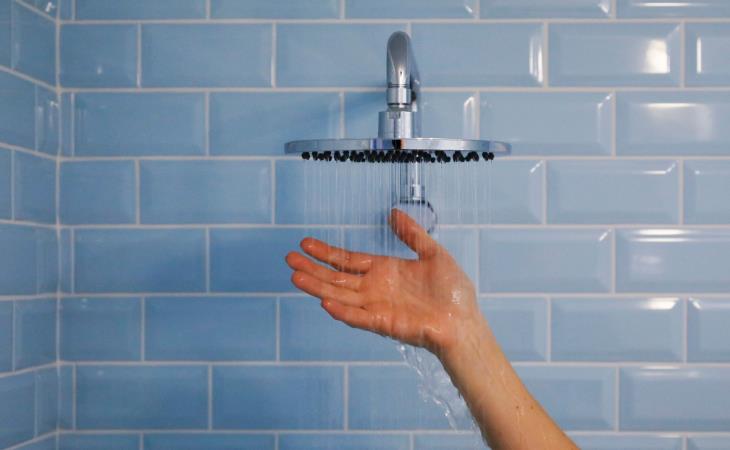
While your main shower runs smoothly, the handheld shower head attached to the flexible line may have insufficient water pressure. If this is interfering with your shower pleasure, look for kinks in the shower line. These kinks tend to be caused by solids or sediments that cause clogs, lowering water pressure as it exits the hose.
3. Check the valves
Sometimes, your water shut-off valve may not always be fully open. For example, after some recent renovations or home improvements, the valve may have been turned off and forgotten, or it may have been partially reopened. Furthermore, aging valves may lose their grip, causing them to shut down accidentally due to water flow.
Locate your shut-off valve, which is usually beneath the kitchen sink or near the water heater, though this can vary. To restore full water supply, adjust the valve level parallel to the water pipe. This is a great opportunity to evaluate your water heater to ensure both hot water and adequate pressure.
4. Adjust or replace the flow restrictor
The National Energy Act mandates shower heads to have flow restrictors to manage water usage for conservation purposes. Although necessary for protecting natural resources, these limits can have a significant influence on consumers' energy costs.
However, if you enjoy a full-force jet shower, the restrictor can be inconvenient. It can further reduce the already minimal flow of water, leaving you with nothing more than a dribble. You can restore regular water flow to your shower head by removing the flow restrictor if it is in good condition.
5. Replace the shower head
If limescale buildup has irreparably clogged your shower head or hose, it's time to replace it to restore water pressure. To increase water flow, choose a shower head with fewer and finer openings. Experiment with different spray patterns by using customizable parameters. Consider replacing your current shower head with a normal one that does not restrict water pressure, especially if it is built for water conservation.
6. Install a water softener
A hard water supply, which is water containing high levels of minerals such as calcium and magnesium, may result in clogs in the pipes and reduced water pressure. A water softener can be the answer to this problem. This device effectively removes minerals from water, reducing strain on pipes and appliances and, as a result, improving water flow and pressure. While water softeners can be expensive, they are a worthwhile investment for people who have hard water difficulties.
7. Watch out for leaks
Quality pipes and tight joints notwithstanding, plumbing lines are vulnerable to concealed leaks. Water may be trickling away unnoticed, gradually reducing the water pressure in your shower. Aside from being inconvenient, these leaks can reduce water pressure, increase energy costs, and endanger your home's foundation.
8. Upgrade to larger water pipes
A narrow pipe diameter can also contribute to insufficient water pressure in addition to evident pipe issues. Residential properties usually have 1/2-inch or 3/4-inch plumbing lines, while larger properties may have 1-inch or 2-inch lines. If you are experiencing low water pressure and it persists even after fixing any evident pipe problems, you may want to consider consulting a plumber and upgrading your water lines to a larger size. This will improve the overall water pressure throughout your home and ensure an adequate supply of water.
9. Install a shower pump
If you're tired of taking low-pressure showers and have tried all the common solutions without success, there's still hope. You can install a shower pump to increase the water pressure in your shower. The shower pump uses an impeller to boost the water pressure before it flows through the shower head. Although it's a more expensive option, hiring a plumber to install the pump can be worth it for a truly satisfying shower experience.

